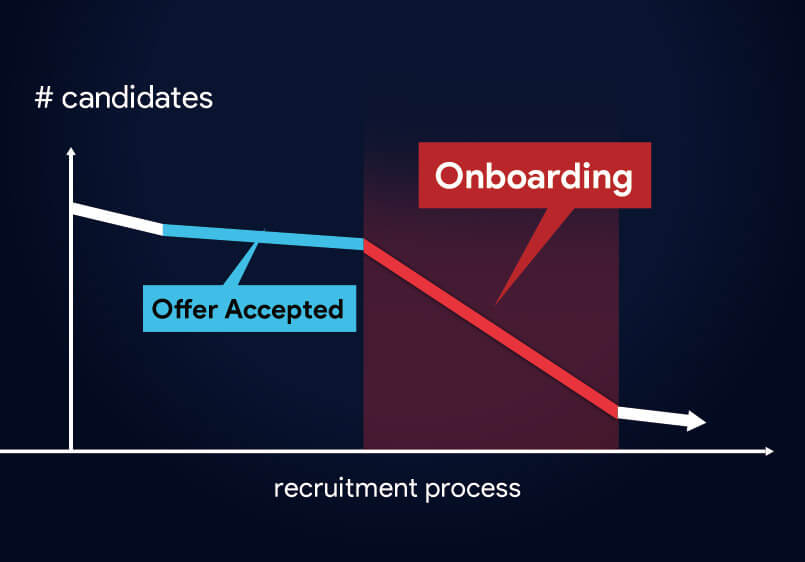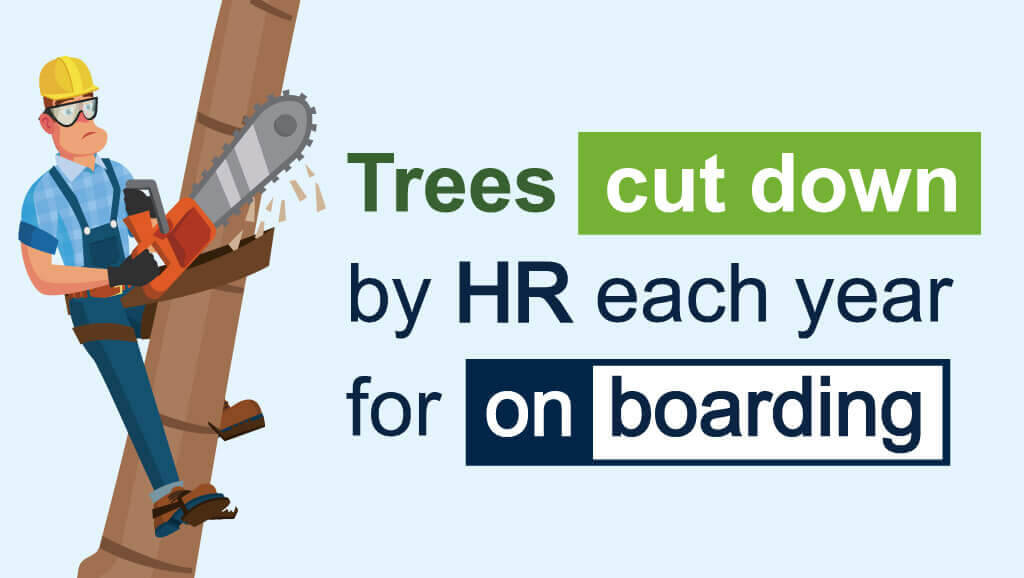Modern and smooth onboarding experience is certainly not everything, but losing a good candidate at the last stage in the process is both disappointing and expensive. Every stage in the recruitment process is important including:
- Employer branding
- Job promotion/sourcing
- Recruitment process
- Onboarding
- Induction
As a matter of fact, if the first 3 stages don’t get executed well, there wouldn’t be any candidates, sitting at the onboarding stage to start with. Well… competitive candidates that is.

So I’m not trying to undermine any of the pre-onboarding stages that HR must get right… however, in this article I want to give onboarding more weight because of the following reasons:
1 – Huge & Stressful Decision
The wrong time to spook a candidate – it’s like signing on a $1M house loan!

Deciding to apply for an ad is one thing but resigning from your existing job is something else! Making a decision to change jobs can be as stressful as buying a house, and so the last thing you want to do is making the candidate feel as though, your company/the HR team:
- Is disorganised
- Is dysfunctional
- Don’t appreciate your employees, or;
- You don’t appreciate the risk their making by resigning from their current job to come and work for you
Disjointed manual onboarding process with lack of visibility in the process and prompt update on what’s to come, can be that negative gut feeling that spooks the candidate and makes them change their mind.It’s very simple to understand – you make a verbal offer to the candidate, they accept it, and you say, ok will send you your onboarding pack. At this stage, it’s so critical that:
- Everything happens in an uttermost professional manner,
- Happens in a timely manner, and;
- With a constant update to what happens next.
2 – Don’t Instil Doubt in Candidates
Don’t give them a reason to doubt the decision they made to resign from their job & come work for you

So a smooth paperless onboarding process powered by a slick and mobile-enabled platform, that maintains employer branding, constant updates and communications, and let the candidate review their contract and sign it in seconds should no doubt in my mind help you to reduce those drop-offs that are based buyer-remorse feelings.
3 – Sign Them Up Before Your Competitors Do

As you’re recruiting a good candidate, the chances are one or more of your competitors are trying to recruit them too. So if you and when the candidate accepts your verbal offer, the last thing in the world you want to do is allow your competitors time to speak with the candidate and negotiate a better offer than yours. So again the quicker, you have them sign your contract/offer the better. It’s a known fact that candidates who change their mind after signing an employment contract are too dismal for you to worry about this type of drop-off risk.
4 – Very Expensive Stage to Lose a Candidate

Losing a candidate during the onboarding stage is very expensive for two main reasons:
- HR, managers/executives would’ve spent a lot of time and money during the recruitment process to get the candidate to accept their offer and ready for onboarding
- Drop-off during the onboarding stage means the seat is still empty and the business’ performance could be impacted
5 – It’s the Glue Between a Polished Recruitment Team & the Real Company
The lipstick on the pig starts to come off

Disjointed, manual and slow onboarding process has a high risk of spooking the candidates because it reveals a dysfunctionality in the business as the candidate feels they’re starting to get a glimpse of the inside working of the company as opposed to the marketing-like image HR and the company have been so far projecting.
6 – It’s an Opportunity to Get Induction Right
There is so much overlap between onboarding and induction – in fact, some of our clients get a % of induction done during the onboarding. Never the less it’s always going to be a taste of what the induction is going to be like as the candidate starts to engage with other people in the business such as payroll, the hiring managers, IT, training, induction etc. So getting this right will certainly set you up really well to hand the candidate into the induction process smoothly. I mean there are so many transferable skills and technology between the two, and so I’d find it hard to believe that you can get onboarding right and fail badly at induction.
7 – It’s a Test to Show How Much You Care
A disjointed transition from recruitment to onboarding coupled with lack of communicating positive, kind and appreciative messages during the process… will not exactly show the candidate that you actually appreciate their decision to take the risk of changing jobs and work for you nor would show them how kind you are and how much, in general, you value your employees.
8 – It’s a Significant Cost Saving for the Organisation

From working with 100s of large organisations, we believe that a 1,000 head-count organisation could be saving over $200,000 by adopting a modern and paperless digital onboarding process. The saving comes from:
- Labour cost – Salary spent on the manual process of collating all the documents required, mailing them, communicating with candidates and coordinating the entire process with the managers, execs, payroll and the candidate
- The drop-off of candidates during the onboarding process which requires the recruitment process to take a lot longer and cost a lot more and keep and an empty seat in the company empty for longer
9 – It’s Great for the Environment

Modern paperless onboarding can save a significant amount of paper and in doing so save so many trees! I’ve written before about this topic and strongly recommend that you read this article: TREES CUT DOWN BY HR FOR ONBOARDING EACH YEAR
Put it this way… one thousand organisations around the 1,000-headcount each could be saving 3,000 trees each year – that’s 15,000 trees over 5 years – I mean that’s the entire tree population of Centennial Park in Sydney – can you imagine that!


COMMENTS